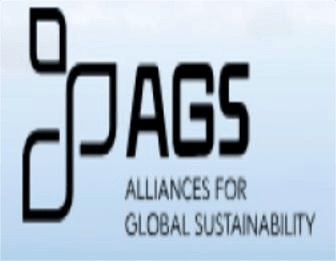GHG Reporting: A Key Step Towards Climate Accountability
Greenhouse Gas (GHG) reporting is a critical component in the global effort to combat climate change. It involves the systematic measurement, tracking, and disclosure of greenhouse gas emissions by businesses, governments, and other organizations. As the effects of climate change intensify, GHG reporting has gained significant importance, providing a foundation for accountability, transparency, and climate action. This article explores the essentials of GHG reporting, its importance, frameworks, and how businesses can implement effective reporting strategies.
What is GHG Reporting?
GHG reporting refers to the process of quantifying and documenting greenhouse gas emissions produced directly or indirectly by an organization. These emissions are often categorized into three scopes, as defined by the Greenhouse Gas Protocol, one of the most widely used GHG reporting frameworks:
- Scope 1: Direct emissions from sources owned or controlled by the organization, such as company vehicles or on-site fuel combustion.
- Scope 2: Indirect emissions from the generation of purchased electricity, steam, heating, or cooling consumed by the organization.
- Scope 3: All other indirect emissions occurring in an organization’s value chain, such as supplier emissions, employee commuting, and the use of sold products.
This categorization helps organizations understand the full impact of their activities and identify areas for improvement.
The Importance of GHG Reporting
- Regulatory Compliance
Governments worldwide are introducing stringent regulations to address climate change. Countries in the European Union, the United States, and beyond now mandate businesses to disclose their emissions data. For instance, the EU’s Corporate Sustainability Reporting Directive (CSRD) requires detailed GHG reporting from large corporations. Complying with such regulations ensures businesses avoid penalties and legal challenges. - Investor Confidence
Investors are increasingly scrutinizing companies for their environmental, social, and governance (ESG) performance. Transparent GHG reporting signals that a company is managing climate-related risks and aligning with sustainable business practices. Companies with strong ESG credentials often attract more investment and secure better financing opportunities. - Competitive Advantage
Consumers are more eco-conscious than ever, favoring brands that demonstrate environmental responsibility. Companies that actively monitor and reduce their emissions can differentiate themselves, build customer trust, and strengthen their market position. - Risk Management
Climate change poses significant physical, financial, and reputational risks to businesses. By tracking emissions, organizations can identify vulnerabilities in their operations, supply chains, and products, enabling proactive risk management and cost savings. - Global Climate Goals
GHG reporting contributes to global climate goals, including the Paris Agreement, which seeks to limit global warming to 1.5°C above pre-industrial levels. Accurate emissions data helps governments and organizations develop effective policies and strategies to reduce emissions collectively.
Frameworks and Standards for GHG Reporting
Several internationally recognized frameworks guide organizations in GHG reporting. These include:
- The Greenhouse Gas Protocol
The GHG Protocol provides comprehensive guidance for measuring and managing emissions across scopes. It is widely adopted by businesses and forms the basis for many reporting standards. - CDP (Carbon Disclosure Project)
The CDP encourages companies to disclose their environmental impact through detailed questionnaires. Its database is a trusted resource for investors and stakeholders. - ISO 14064
This standard offers guidelines for quantifying and reporting GHG emissions, as well as verifying reports through independent audits. - Science-Based Targets initiative (SBTi)
The SBTi helps companies set emissions reduction targets that align with climate science, ensuring their goals contribute to global climate objectives. - Task Force on Climate-Related Financial Disclosures (TCFD)
The TCFD focuses on the financial implications of climate-related risks and opportunities, encouraging organizations to disclose GHG data within the context of business strategy.
Steps to Implement Effective GHG Reporting
- Define Boundaries and Objectives
Organizations must establish the scope and boundaries of their reporting, considering the operations, subsidiaries, and supply chains included in the analysis. - Select a Framework
Choosing the right framework is critical to ensure the report is comprehensive, credible, and aligned with stakeholder expectations. - Collect Data
Gather data on energy consumption, transportation, waste management, and other emissions sources. Technology tools such as carbon accounting software can streamline this process. - Perform Calculations
Using emission factors provided by frameworks or regional authorities, organizations can convert activity data (e.g., kilowatt-hours of electricity used) into GHG emissions. - Validate and Verify
Third-party audits can enhance the credibility of GHG reports, ensuring accuracy and compliance with reporting standards. - Communicate Results
GHG reports should be shared transparently with stakeholders through sustainability reports, websites, or investor presentations. Highlighting reduction strategies and progress can further enhance trust.
Challenges in GHG Reporting
- Data Availability
Scope 3 emissions, which encompass a company’s entire value chain, can be challenging to quantify due to reliance on third-party data. - Complexity
The technical nature of GHG calculations and the multitude of reporting frameworks can overwhelm organizations. - Cost Implications
Implementing GHG reporting systems requires investment in technology, training, and third-party verification. - Evolving Standards
As regulations and expectations evolve, organizations must continuously adapt their reporting practices to stay compliant.
The Path Ahead
The future of GHG reporting lies in greater integration with digital tools and artificial intelligence (AI). Advanced carbon accounting software, blockchain technology for traceability, and AI-powered analytics are making it easier for businesses to collect, analyze, and report emissions data.
Governments and international organizations will likely introduce stricter reporting mandates, compelling even small and medium-sized enterprises to adopt GHG reporting practices. Companies that embrace transparency and sustainability early on will not only mitigate risks but also seize new opportunities in the transition to a low-carbon economy.
Conclusion
GHG reporting is no longer optional in today’s climate-conscious world. It is an essential practice for businesses committed to sustainability, regulatory compliance, and long-term success. By adopting robust reporting systems and frameworks, organizations can take a vital step toward reducing their carbon footprint and contributing to a more sustainable future. The time to act is now – GHG reporting is the foundation for meaningful climate action.
for more information click here: GHG Reporting




